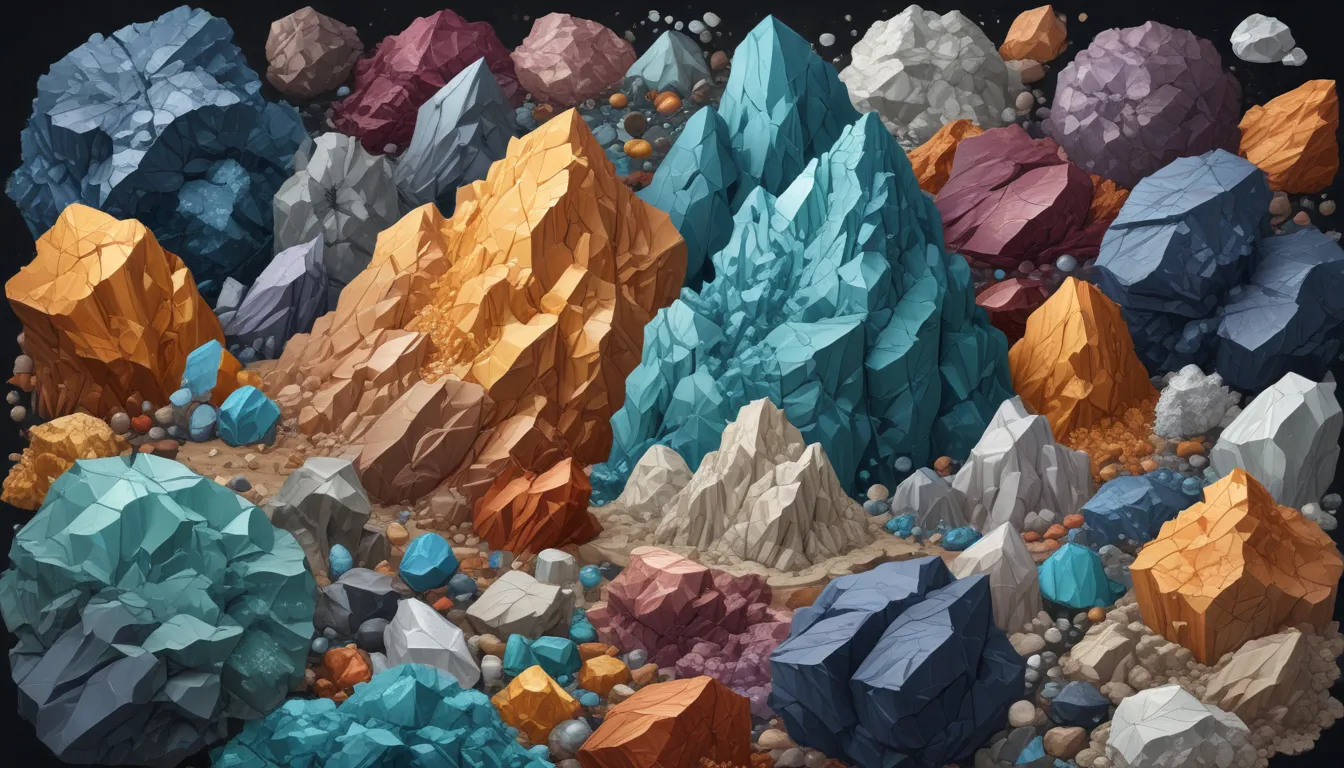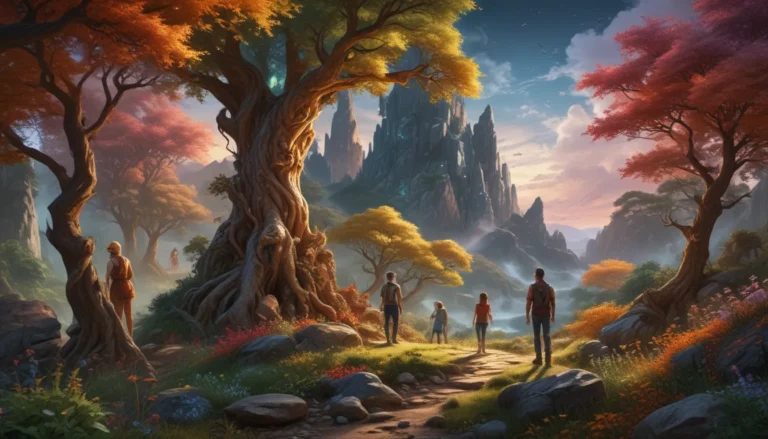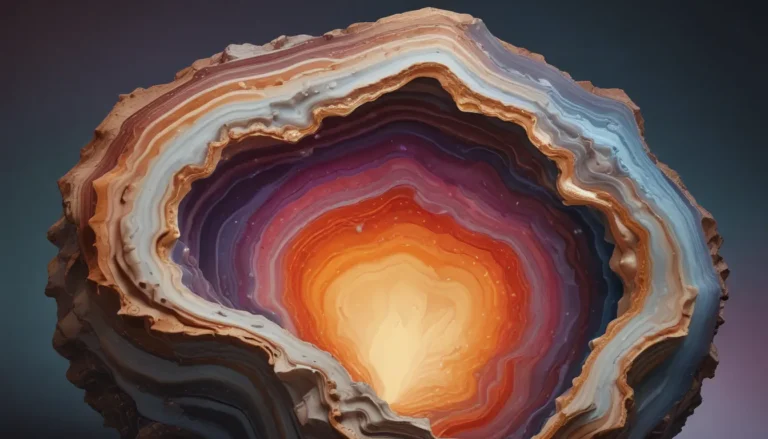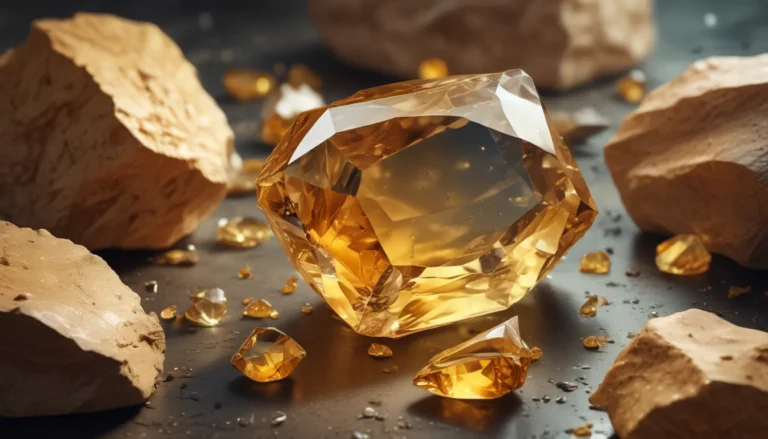A Note About Images: The images used in our articles are for illustration purposes only and may not exactly match the content. They are meant to engage readers, but the text should be relied upon for accurate information.
Minerals are the building blocks of the Earth, offering a dazzling array of colors, shapes, and properties. From their role in industries to their beauty in gemstones, minerals captivate our imagination and impact our lives in various ways. Let’s explore 18 intriguing facts about minerals that will leave you in awe of their wonders.
The Natural Wonders of Minerals
Minerals are marvels of nature, forming through geological processes without human intervention. They can be found all around us, from rocks to soil to the depths of the Earth’s core. These naturally occurring substances never cease to amaze us with their beauty and diversity.
Crystalline Structures of Minerals
Most minerals boast a crystalline structure, where atoms arrange themselves in an orderly manner to form distinct crystals. This atomic arrangement gives each mineral its unique appearance and characteristics, adding to their allure and beauty.
A Kaleidoscope of Colors
The colors of minerals are as diverse as the elements they contain. Iron lends a reddish tint, while copper imparts a greenish hue to minerals. This variety of colors makes each mineral a work of art in nature’s palette, captivating our senses with their vibrant hues.
The Hardness Factor
Mineral hardness, measured on the Mohs scale from 1 (softest) to 10 (hardest), determines a mineral’s resistance to scratching. From the softness of talc to the hardness of diamond, minerals showcase a wide range of hardness levels that never fail to intrigue us.
Minerals in Industry
The economic significance of minerals cannot be overstated, as they play vital roles in industries such as construction, technology, and manufacturing. From metals to ceramics to glass, minerals are essential ingredients in a wide array of products that shape our daily lives.
The Legendary Diamond
Diamonds are not only prized for their beauty but also revered for being the hardest mineral known to man. Their exceptional brilliance and durability make them coveted gemstones, symbolizing strength and endurance in the mineral world.
Quartz: Nature’s Gift
Quartz, one of the most abundant minerals on Earth, is a true gem of nature. Its widespread distribution and stunning beauty make it a favorite in the production of glass and electronics, showcasing both practicality and elegance in the mineral realm.
The Glow of Fluorescent Minerals
Some minerals possess the unique ability to fluoresce, emitting visible light when exposed to ultraviolet rays. This captivating phenomenon adds an extra layer of enchantment to these minerals, drawing us into their luminous charm.
Healing Powers of Minerals
Certain minerals, like amethyst and quartz, are believed to possess healing properties that enhance our well-being. Used in alternative therapies such as crystal healing and meditation, these minerals offer a holistic approach to health and harmony.
The Value of Gemstones
Gemstones are precious minerals prized for their rarity, beauty, and durability. From diamonds to rubies to emeralds, these exquisite gems have captivated hearts and minds throughout history, symbolizing love, wealth, and power.
Minerals in Cosmetics
Minerals such as mica and titanium dioxide play a crucial role in cosmetics, providing color, texture, and sun protection in products like foundation, eyeshadow, and sunscreen. Their versatility and beauty enhance our cosmetic experience, adding a touch of luxury to everyday routines.
Minerals in Electronics
Vital minerals like copper, gold, and silver are essential components in electronic devices, conducting electricity and transmitting signals in computers, smartphones, and other gadgets. Their conductivity and reliability make them indispensable in the digital age, powering our technological advancements.
The Volcanic Origins of Minerals
Volcanic eruptions give rise to new minerals, as the intense heat and pressure created during volcanic processes foster the growth of mineral formations. These geologically active events shape our planet’s mineral landscape, laying the foundation for new discoveries and marvels.
Cultures and Minerals
Throughout history, minerals have held cultural and historical significance, serving as adornments, currency, and symbols of power and prestige. From ancient civilizations to modern societies, minerals have played a pivotal role in shaping human culture and civilization.
Magnetism in Minerals
Certain minerals, like magnetite, exhibit natural magnetic properties that have practical applications in compasses and magnetic recording devices. Their magnetic allure adds another dimension of fascination to these minerals, showcasing nature’s magnetic wonders.
Extraterrestrial Minerals
Meteorites, remnants of celestial bodies that fall to Earth, contain unique minerals not found on our planet. Studying these extraterrestrial minerals provides valuable insights into the formation of the universe, offering a glimpse into the cosmic origins of these otherworldly substances.
Minerals for Health and Wellness
Essential minerals like calcium, iron, and potassium are vital for maintaining our health and well-being. From strong bones to oxygen transport to bodily regulation, these minerals play key roles in supporting our body’s functions, ensuring optimal health and vitality.
The Ever-Changing World of Minerals
The dynamic nature of the Earth continually shapes and transforms minerals through geological processes such as erosion, volcanic activity, and tectonic movements. This ever-evolving mineral world reminds us of the constant changes and wonders that lie beneath our feet, waiting to be discovered and appreciated.
Appreciating Minerals: A Final Reflection
In conclusion, the world of minerals is a treasure trove of beauty, diversity, and wonder that enriches our lives in countless ways. From their practical applications to their aesthetic appeal, minerals embody the essence of nature’s artistry and resilience. So, next time you encounter a mineral or hold a gemstone in your hand, take a moment to marvel at the intricate beauty and fascinating properties of these remarkable gifts from the Earth.
Exploring the World of Minerals: Frequently Asked Questions
How many different minerals exist?
There are over 4,000 recognized minerals, with new ones being discovered and classified regularly, showcasing the vast diversity and complexity of the mineral kingdom.
Are all rocks composed of minerals?
Not all rocks consist entirely of minerals; some rocks, like coal and obsidian, are composed of organic matter or volcanic glass, respectively, highlighting the varied compositions of rocks in nature.
Can minerals be artificially created?
Yes, some minerals can be synthesized in laboratories through processes that replicate natural geological conditions, offering new insights and applications for these man-made minerals.
Do some minerals exhibit natural radioactivity?
Yes, certain minerals such as uranium and thorium are naturally radioactive, emitting radiation as part of their atomic decay process, showcasing the diverse properties and behaviors of minerals in the natural world.
Are all minerals solid substances?
Yes, minerals are generally solid substances with a precise chemical composition and an orderly atomic arrangement, distinguishing them from liquids and gases in their physical properties and characteristics.
In our pursuit of delivering engaging and reliable content, each fact shared here is contributed by our community of users, ensuring a wealth of diverse insights and information. Our dedicated team of editors rigorously evaluates each submission to uphold the highest standards of accuracy and authenticity, guaranteeing a trustworthy resource for learning and exploration. Embrace our commitment to quality and genuine knowledge as you embark on a journey of discovery and wonder with us.





